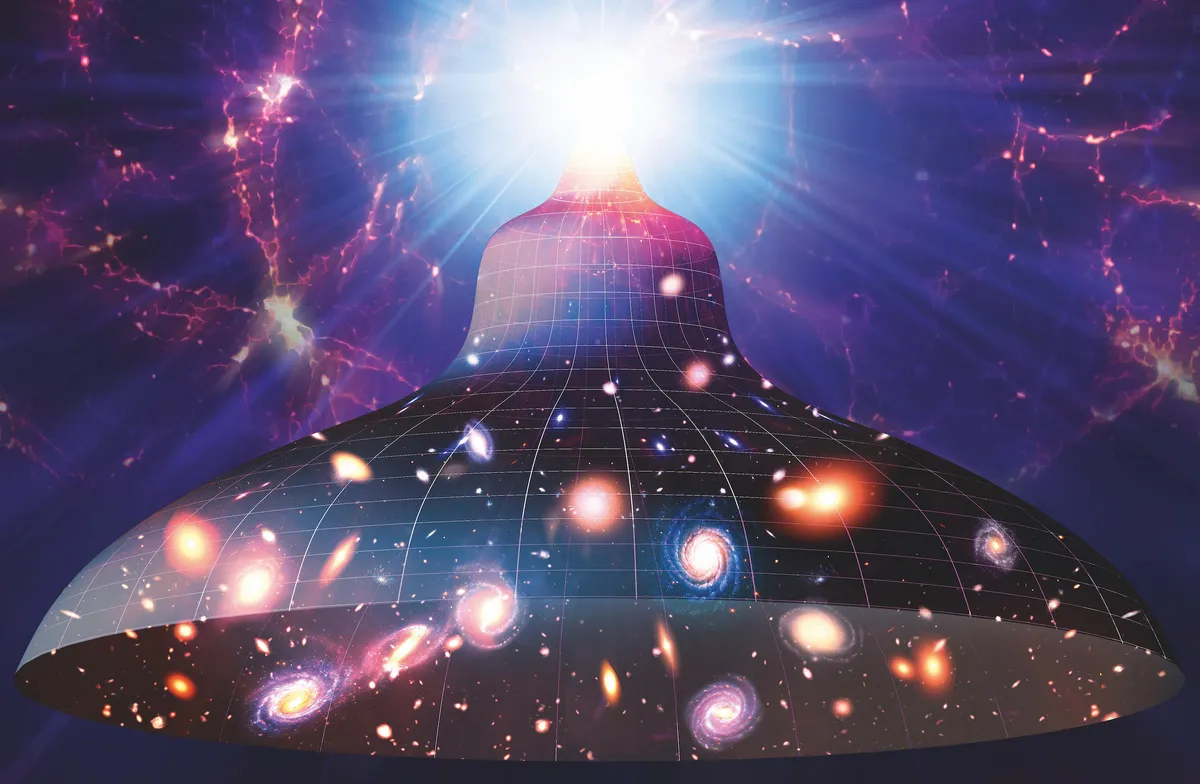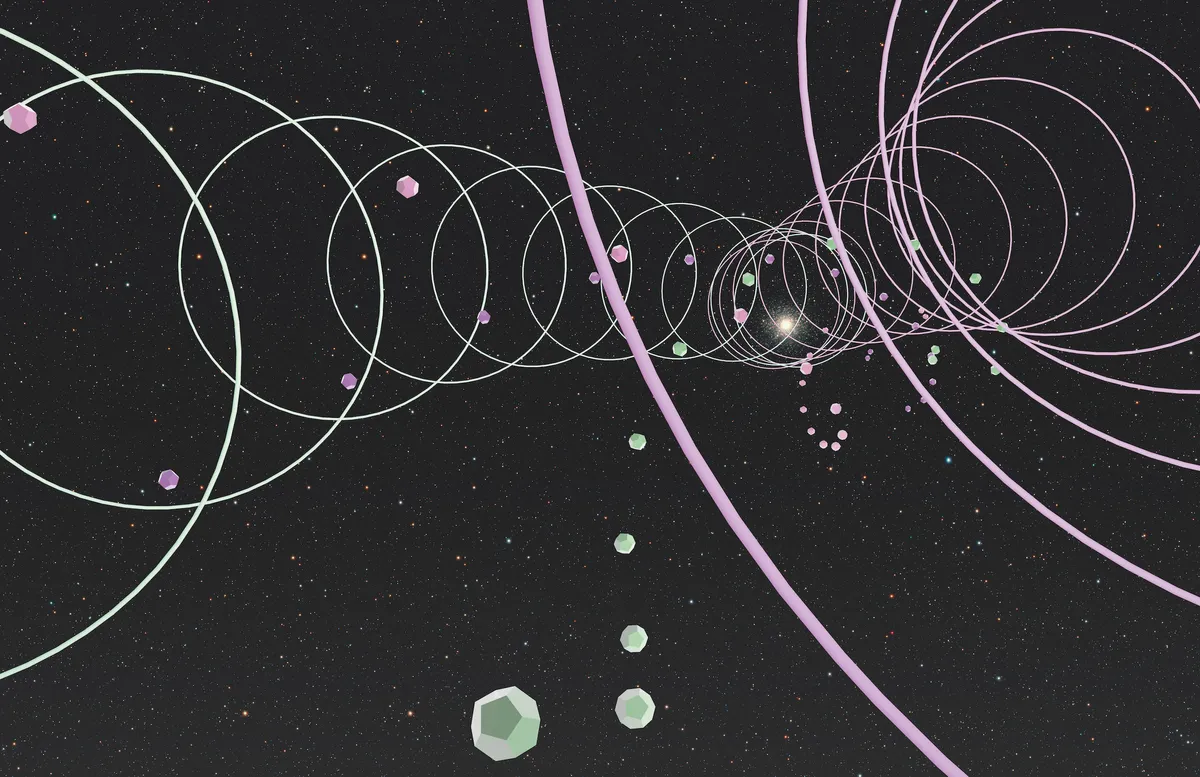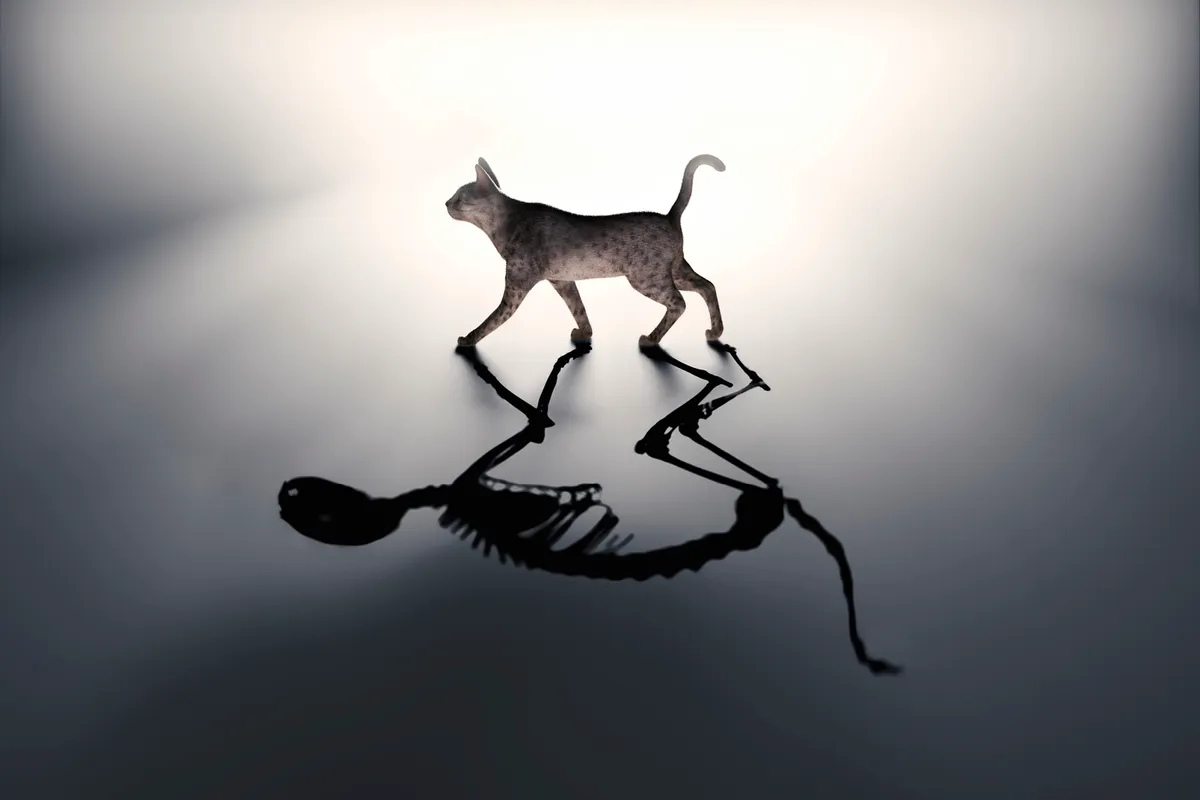You might have noticed, if you’ve set foot in a cinema this year, that Hollywood has fallen in love with the multiverse. From Marvel to DC to Disney, alternate universes, realities and timelines are being written into scripts to wow audiences and make life a bit easier when A-list celebrities tire of yanking on the latex.
It’s not just the big studios that are at it. The sublimely joyful indie film Everything Everywhere All At Once asks and answers, ‘why, if everything is happening everywhere and all at once, should any of it matter?’
Likewise, Rick And Morty, Dark and Man In The High Castle use the idea of alternate universes as a kind of funhouse mirror to ponder (sometimes) serious questions about our own Universe. And it’s fair to point out that the idea is nothing new. Who could forget Spock’s evil doppelgänger with his suitably sinister goatee? Clearly, the idea of the multiverse has permeated the fabric of our culture. But what do the scientists think about multiverses? Is there the science to back them up?
Many physicists believe that multiverses could exist, ranging from universes lurking behind the event horizons of black holes, to growing universes expanding like bubbles in soap foam.
“A multiverse is something which is really not that strange if you think of it historically, from the point of view of science,” says Prof Ulf Danielsson, a theoretical physicist at Uppsala University, Sweden. “Our horizons have continuously been expanding. At some time, we thought that Earth was the only planet and that this was the whole world. We now know there’s a Universe full of other planets. It’s also quite natural to speculate that there is another step and that our Universe is not the only one.”
So what are some of the leading multiverse theories, and which of them could harbour an evil, possibly moustachioed, you.
Read more about the multiverse:
- Doctor Strange: Could we really be living in a multiverse?
- Black holes and the multiverse could account for all dark matter, astronomers claim
- The Matrix: Are we living in a simulation?
The cosmological inflating multiverse
This is a theory that has grown out of cosmology, particularly from the discovery that our own Universe is expanding. This concept of a multiverse asks if the initial rapid inflation that our Universe underwent some 13.8 billion years ago, could be happening in distant regions of space-time disconnected from our Universe.
“The basic idea is that our Universe is one particular patch of space-time that is evolving as a well-defined entity,” explains astrophysicist Prof Fred Adams, from the University of Michigan. “This region is homogeneous, isotropic [the same in all directions] and expanding in a well-defined manner. If you trace the evolution backward in time, then you find an age for the Universe of about 13.8 billion years from this initial expansion.”
Adams, who wrote the book Our Living Multiverse and authored a Physics Report paper on the topic, also believes that other regions of the multiverse could be experiencing their own Big Bangs, and therefore their own expansions. This means that they are not able to affect our Universe. “They are thus other universes and the collection of all such universes is the multiverse,” Adams says.
This multiverse idea caught on in fiction because it is an excellent storytelling device. It became popular in cosmology because it could address lingering mysteries, while still fitting with existing physics.
“One reason that the concept of the multiverse became popular is that it can naturally arise from the theory of inflation,” explains Heling Deng, a postdoctoral researcher in cosmology, particle physics and astrophysics at Arizona University.
“It was shown by [physicists] Andrei Linde and Alex Vilenkin, in separate works, that if inflation did occur, it could create infinite disconnected regions.”
Although inflation ended 13.8 billion years ago in the Universe we are living in, Deng says that quantum effects can always bring inflation back in another region of space-time. This results in bouts of inflation never ending – referred to as ‘eternal inflation’ – and the possibility of an infinite number of ‘different universes’.

Russian-American theoretical physicist Andrei Linde puts forward one suggestion for the arrangement of this multiverse. He sees the universes as ‘bubbles’ expanding on something resembling a cosmic canvas, squeezing away from each other in bouts of eternal and chaotic inflation.
How these universes within a multiverse would differ is also currently the topic of speculation, but Adams suggests there’s no reason to believe that the laws of physics would be the same in these separate regions.
“One reason that these other universes are of interest is that they could have other versions of the laws of physics,” he says. That variation could apply across a range of physical parameters, including gravity and the rate at which that universe expands.
That means some of these universes could have laws of physics that aren’t fit for the formation of large-scale structures like galaxies or stars. They may not even have the same fundamental particles.
Consequently, these universes aren’t variations of our Universe and thus could not host any life at all, never mind some version of you or I.
The string theory multiverse
String theory is a suggestion put forward by physicists to connect quantum mechanics and General Relativity, which are the best descriptions we have of the infinitesimally small and incomprehensibly large. The underlying idea of string theory is that fundamental particles like quarks and electrons are actually a single point in one-dimensional strings, vibrating at different frequencies.
This ‘string-landscape’ provides a popular setting for the multiverse, thanks to one of the key elements upon which string theory depends. In order to be mathematically sound, string theory needs ‘extra dimensions’ to exist.
These aren’t parallel dimensions like we see in science fiction. Instead, string theorists believe these extra dimensions are curled up within the three traditional dimensions of space. They remain invisible to us, as we evolved only to see in three dimensions. These extra dimensions could offer a ‘way in’ to the string theory multiverse.

“You need to have these extra dimensions, and the number of dimensions needed in total is 10 or 11,” Danielsson says. “It could also be that you would need to go into some extra dimension in order to get to these other universes.”
Even if this was the case and a connection via these dimensions of space to other universes existed, they may still remain permanently out of reach and view, thanks to the fact that the inflation of the Universe means that there is a cosmic horizon beyond which we can’t see. If there is no ‘connectivity’ between universes in a multiverse, it makes the cosmological concept of a multiverse almost impossible to test experimentally.
“The ‘evidence’ to date is theoretical, not experimental. And, unfortunately, we just cannot do any direct experiments to verify or falsify what goes on in other universes,” Adams explains.
Our inability to test these ideas is a double-edged sword. While the lack of ways to test a multiverse means we can’t prove its existence, it also means we can’t disprove it either.
The black hole multiverse
At the end of a massive star’s life, when it has run out of fuel for nuclear fusion, it’ll collapse into a black hole – a region of space-time bounded by a surface called an event horizon from which nothing, not even light, can escape.
Einstein’s General Theory of Relativity tells us that a large mass can curve space-time. The theory also says that the heart of a black hole has a singularity where the mass is so great that the space-time curvature becomes infinite and, consequently, the laws of physics break down. This is a concept that troubles physicists, but one hypothesis could do away with the singularity and replace it with an entire universe and in turn, a multiverse.
“Singularities are unphysical because they cannot be measured. That means their existence indicates that a theory is incomplete,” says theoretical physicist Dr Nikodem Poplawski, from the University of New Haven, Connecticut. “In my hypothesis, every black hole produces a new, baby universe inside – on the other side of the event horizon – and becomes an Einstein-Rosen bridge, also known as a wormhole, that connects this infant universe to the parent universe in which the black hole exists.”

In this theory, when viewed from the new universe, the parent universe appears as the other side of a white hole, a region of space that cannot be entered from the outside and which can be thought of as the reverse of a black hole.
“An analogy of the matter going to a black hole and ending up in a new universe could be blowing a soap bubble through a circular wand,” Poplawski says. “The wand is the event horizon – albeit in one dimension less – the soap liquid is the matter crossing the event horizon, and the surface of the bubble is the new universe.”
In the hypothesis suggested by Poplawski, a universe may produce billions of black holes and each of them could produce a baby universe. In January of this year, researchers at the International School of Advanced Studies (SISSA) in Italy estimated that there could be as many as 40 trillion – that’s a four followed by 13 zeros – black holes in our Universe alone. That’s a lot of baby universes!
These infant universes would be hidden from the occupants of their parent universe by the light-trapping surface of the event horizon, and once that event horizon is crossed there’s no going back. That, and the fact nothing can enter a white hole (which is still purely theoretical but allowed by General Relativity), means no interaction between parent and infant.

However, if two black holes existed in the same universe, and each of these black holes created a new universe, then there is a possibility that these two sibling universes could merge, “just as two black holes merge to create one black hole,” says Poplawski.
He adds that this would manifest in a baby universe as a large-scale asymmetry in space. This means that if we ever discover some preferred direction in our Universe – a direction with increasing matter and energy, for example – it could be attributed to our Universe interacting with a sibling.
As for the possibility of an alternate version of you existing beyond the event horizon of a black hole, Poplawski concludes that chances are not good. “There would be no ‘alternate you.’ At any time, an object can only exist in one universe,” he says.
But one pop culture mainstay reflects his concept: “I think the closest thing could be the TARDIS in Doctor Who. You enter the police box and you realise that you are in something bigger than the box.”
The many-worlds multiverse of quantum mechanics
In quantum physics, which deals with the physical laws of the subatomic, the term multiverse doesn’t exist. Alternate universes are instead referred to as ‘many worlds’ and are part of a radically different concept, as these aren’t geographic in nature like the multiverses explored previously.
The many-worlds hypothesis was first suggested by the US physicist Hugh Everett III to explain how a quantum system can exist in seemingly contradictory states at the same time – called a ‘superposition’ – and how these paradoxical states seem to vanish.
The effect of many worlds on the existence of a superposition of states can be imagined by considering Erwin Schrödinger’s infamous thought experiment, Schrödinger’s cat.

In the thought experiment, a hapless moggy is placed in a sealed box with a device containing a vial of lethal poison, released only if an atomic nucleus in the box decays. Treating the box, the cat and the device as a single quantum system, each state – in this case, ‘dead’ or ‘alive’ – is described by a wave. As waves can overlap to form a single wave function, the cat can exist in a superposition of states. This means that in quantum mechanics the cat is both simultaneously dead or alive.
This seemingly contradictory state persists only until the box is opened – analogous to making a measurement on the system – and the wave function collapses meaning the superposition is gone and the state is resolved. The cat is either dead or alive. Yet why measurement causes this collapse of superposition, also known as ‘decoherence’, is still a mystery.
The many-worlds hypothesis does away with decoherence altogether. Instead, it suggests that rather than the opening of the box collapsing the wave function, measurement causes it to grow exponentially and ‘swallow’ the experimenter and eventually the entire Universe.
“In the many-worlds formulation of quantum mechanics, each state of a system is a physically distinct world,” says Prof Jeffrey Barrett, a philosopher of science at the University of California Irvine.
This means each flick of a light switch would create a near-infinity of worlds. One for each possible path of each photon as the light fills your living room, not just a world in which you didn’t flick the switch at all.
That means that in terms of Schrödinger’s cat thought experiment, the experimenter isn’t opening the box to discover if the cat is dead or alive. Rather, they are opening the box to discover if they are in a world in which the cat is dead, or one in which it lives.
At first, the worlds that comprise this quantum multiverse are similar, with infinitesimally small differences. But these changes grow from universe to universe, meaning those that diverged earlier could be strikingly different from each other.
“The objects, events and physical records of observers are different in different worlds. There is a world where the Eiffel Tower is in Los Angeles,” Barrett says. “All of the worlds – universes – are part of a single global universe. It looks just like this universe from the perceptive of our branch world.”
Barrett addresses the question of how likely it is that one of these ‘many worlds’ would contain an alternate ‘you’. He reveals that it isn’t just possible, it’s demanded.
“It certainly would contain many alternate copies of me,” he says. “That is fundamental to how the theory addresses the quantum measurement problem.”
All of this makes the quantum version of the multiverse the one that most closely resembles pop culture , at least in principle. This is because it doesn’t just probably contain infinite versions of you, it definitely does.
Read more about quantum mechanics: